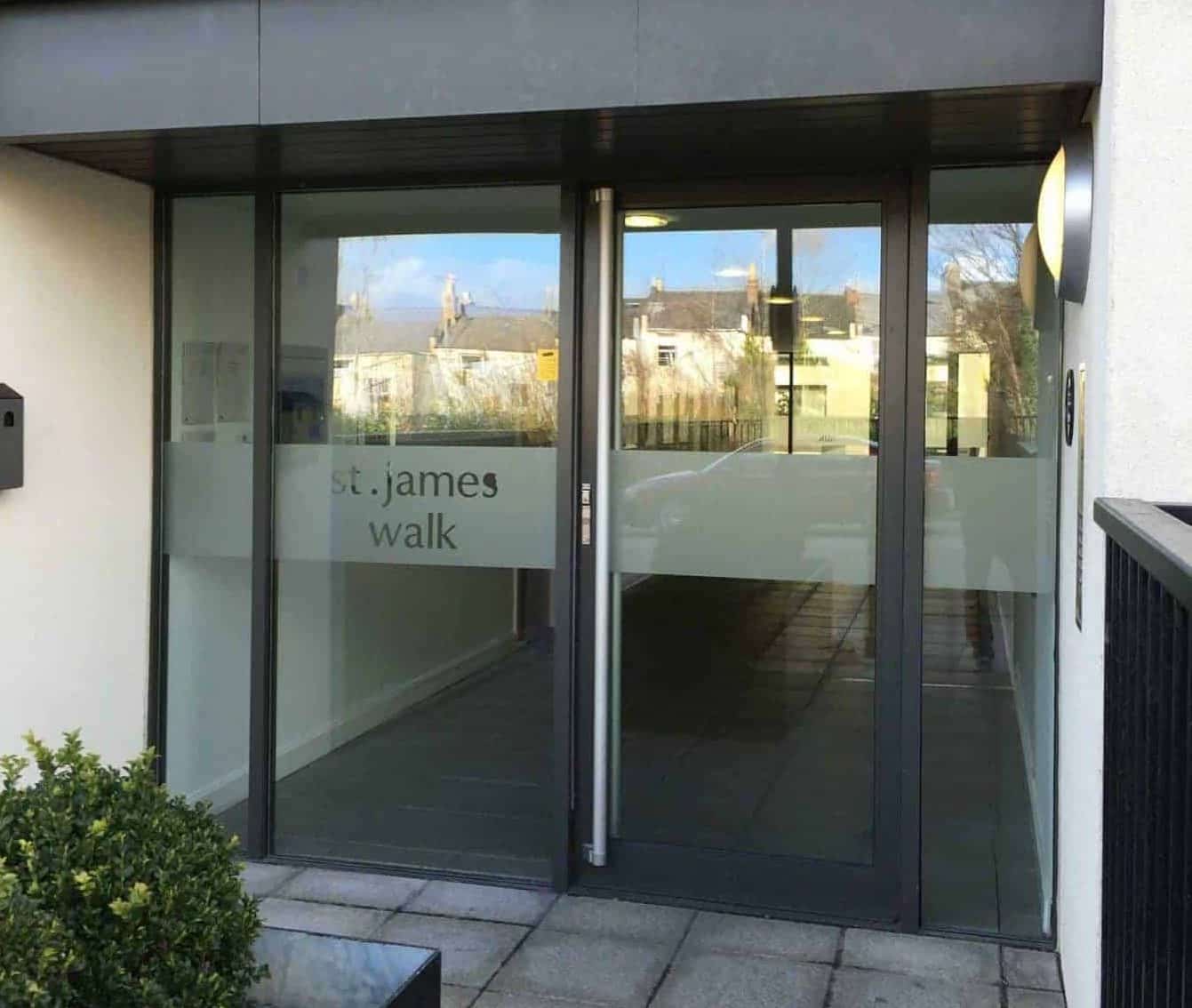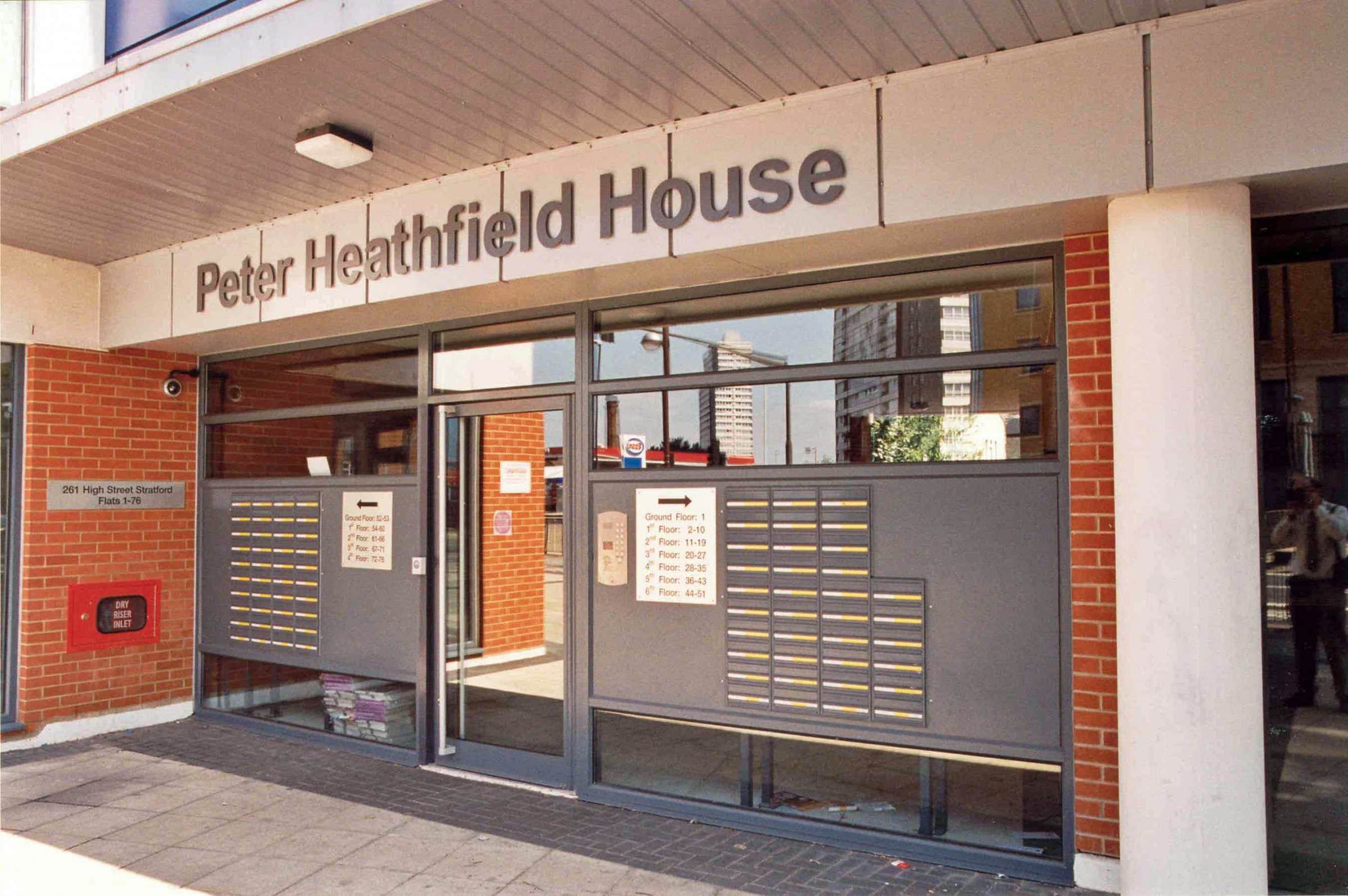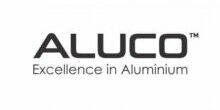In many buildings, the main entrance door must control traffic flow yet remain secure when closed. Aluminium commercial doors with magnetic locks provide an attractive, cost-effective and reliable door solution.

What are commercial doors with magnetic locks?
Commercial doors with magnetic locks are aluminium doors fitted with a proprietary magnetic lock, also known as a ‘maglock’. The door construction is mechanical joints with sturdy corner brackets and cleats. Door profiles come as either thermally broken or non-thermally broken. Other hardware often found on the door includes a concealed overhead closer, a threshold pivot, a low ramp-type threshold and a choice of handles.
The magnetic locks are often called a ‘maglocks’ in the trade. Maglocks are electromagnets that rely upon electricity to lock and unlock the door. The locking/unlocking process happens via buzz entry, card swipe systems, push-button and other similar methods. Magnetic locks comprise the main magnet and an armature plate.
One benefit of commercial doors with magnetic locks is enhanced security over traditional hook locks, deadlocks, bar bolts or two-point locking. Most maglocks have a holding force that exceeds many typical locks. Some holding forces go up to 400kg or more.
Therefore, as well as offering high security, magnetic locks are one of the best ways of giving a building effective access control.
Best of all, commercial doors with magnetic locks come with Secured by Design such as the latest Comar commercial door.
An electromagnetic lock, magnetic lock, or maglock is a locking device that consists of an electromagnet and armature plate. They work in a very similar way to electric strikes by controlling entry and exit into a building.
Unlike an electric strike though, a magnetic lock has no interconnecting parts. Modern maglocks offer a significant amount of holding force and strength and of today’s magnetic locks compares well with that of conventional good specification door locks. Power supplies incorporating a trickle-charged lead-acid battery pack can be used to retain security for short-term power outages.

Magnetic locks possess a number of advantages over conventional locks and electric strikes. For example, their durability and quick operation can make them valuable in a high-traffic office environment where electronic authentication is necessary. Magnetic locks are competitive with conventional locks. For example, the ASSA Heavy Duty High Security Modular Lockcase is designed to withstand an end load of 5,000 N.
Considerations for magnetic locks on commercial doors.
If you require a commercial door fitted with a maglock, there are some things to consider.
- Maglocks are electric and will, therefore, need powering from a suitable supply.
- A professional electrician must connect the maglock to the building power supply.
- Maglocks usually sit at the top of the door. Consider an additional hook lock or mechanical lock at the middle or lower section of the door to prevent twisting of the leaf.
- Maglocks are usually to control entry into the building. Think about how users will exit either via a wall switch or button.
Magnetic Locks can offer the end user some Advantages.
- Magnetic locks are generally easier to install than other locks given there are no interconnecting parts and there is less machining involved.
- Magnetic locks unlock instantly when the power is cut allowing for quick operation in comparison to other locks.
- Magnetic locks may also suffer less damage from multiple blows than conventional locks.
- They require continuous power in that to remain locked, the magnetic lock requires a constant power source.
- Like electric strikes they are available in fail safe or fail secure models
Fail-Safe – The lock will be released when the power shuts down.
Fail-Secure – The lock remains closed when the power is shut down. - If an electromagnet lock is used for Fail-Safe applications, and the lock should satisfy the specifications in fire regulations to be safe in emergency situations.
- Very aesthetically pleasing with maglocks from Adams Rite having attractive cover brackets.
- Suitable for inward, outward or double action doors which is an advantage over electric strikes.
It is important to remember that magnetic locks will usually only work with single action doors – that is doors that either open in or out. There are concealed maglocks available that can work with double action doors if needed.
You should consider what door handles will work with a magnetic lock. Maglocks work as independent locks and rarely in conjunction with anything other than an additional hook lock or deadbolt lock. Therefore these doors will require suitable pull handles on both sides of the door leaf.
To release a maglock, options include push buttons; wall mounted switches, swipe card systems, key fobs or remote operation by a member of staff.
Alternatives to magnetic locks for commercial aluminium doors.
Magnetic locks are undoubtedly the most secure of electric locks and from their appearance deter anyone attempting unauthorised entry. There are also other alternatives. These include electric release strikes working with a suitable latch lock, solenoid bolts, door bolts and locks.











